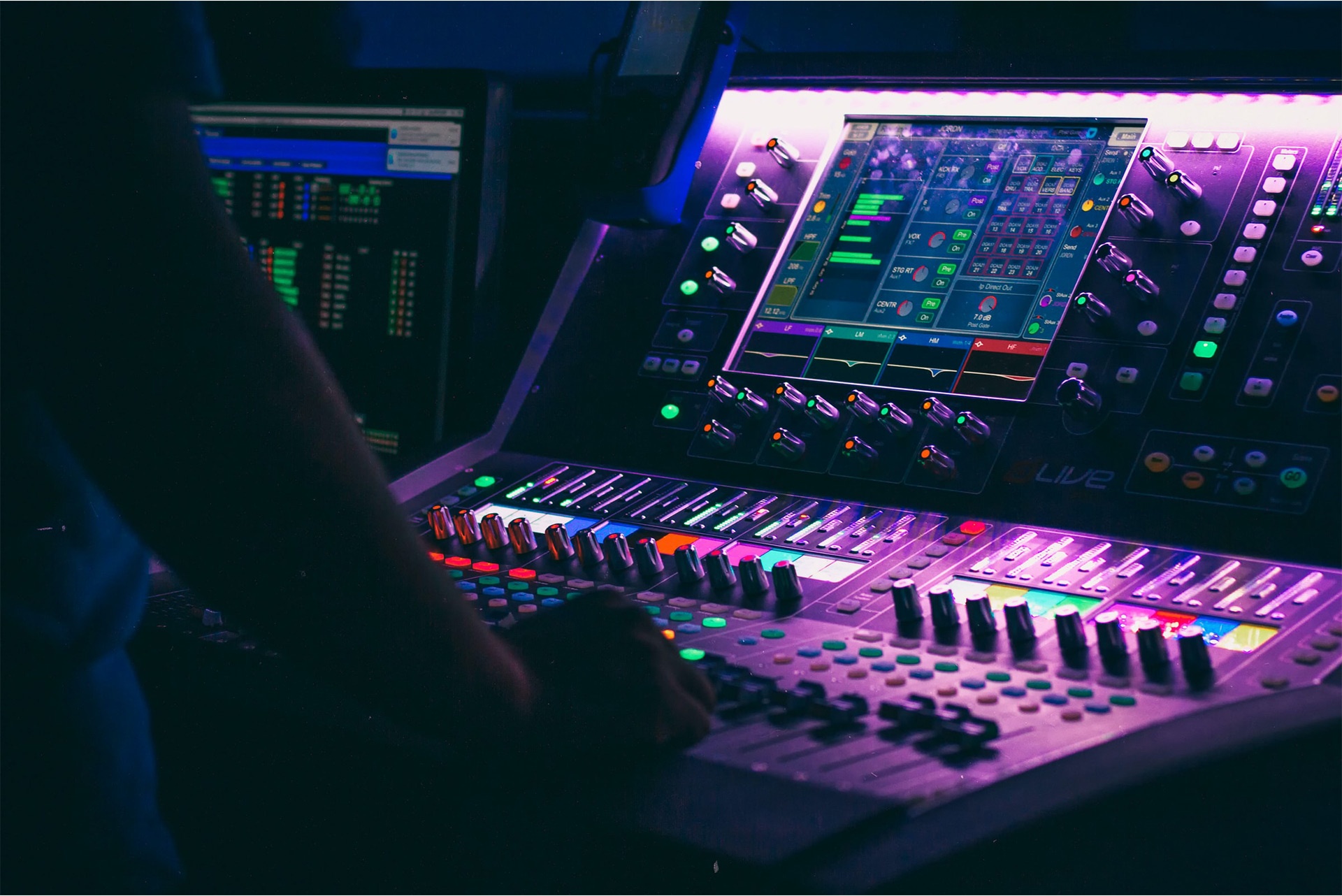It’s said that sound engineers only come to the limelight during an event when audio systems misbehave. That means they are better off behind the scenes. But to really remain unnoticed throughout the event requires adequate preparation, hand-picked sound equipment, and excellent real-time technical support.
When planning your next event, do you know what audio services you will need regarding equipment and AV technicians? Read the list below so you can reach your desired sound and audio experience.
Analog Mixing Boards
This is the most common type of mixing board that people refer to because of its standard appearance. Each supported function has a corresponding control that can be accessed from the control panel. They are user-friendly, affordable, and allow you to easily monitor the flow of signals, especially when on a live session.
Digital Mixing Boards
The fact that each function in an analog audio mixer has an associated control, translates into more weight. However, digital mixing boards provide an even wider range of functionalities and fewer controls on the panel. This is thanks to the integrated wireless communication technology which allows you to remotely control it via a smartphone, iPad, or computer. Eventually, this increases efficiency, saves power, and minimizes maintenance costs.
Large Venue Sound Systems
Besides equipment performance, there is other support equipment you need to incorporate in your audio system if you’re hosting a large audience. For instance, if microphone leads cannot reach the desired point on the stage, bringing in a stage box acts as an extension from the mixing desk. Generally, pay keen attention to the entire PA system to ensure audibility, convenience, and portability.
Small Venue Sound Systems
Loud volume is generally off-putting, especially in corporate meetings or conferences. So, when selecting your sound equipment, be sure to bring only what is important. For instance, you don’t need a stage monitor because the sound from the other speakers is already enough for the presenter. Also, using subwoofers or front-of-house speakers could work even better.
Indoor & Outdoor Speaker Arrays
Large events like tradeshows, product launches, and industry conferences bring together a considerable number of attendees and could either be held indoors or outdoors. Either way, that calls for a powerful sound system. Speaker arrays come in handy because they are made by stacking multiple speakers to output highly stable sound pressure, that cuts through the entire venue.
Wireless Microphones
Wired microphones restrict presenters from moving or interacting with the audience beyond a given space. In events like music concerts, you know this doesn’t work. Fortunately, wireless microphones bring in the freedom to move within a large area that can be up to a 1000 feet radius, depending on the manufacturer’s specifications.
Audio Components From Every Major Manufacturer
When purchasing or renting sound systems, it’s imperative to be very specific with the manufacturer. Top manufacturers in this space have maintained an excellent reputation in the production of high-quality, innovative, and efficient audio components that many customers find reliable. Ultimately, this amounts to the success you strive for in your events.
Make a Bold Difference With Exceptional Audio Services
In the end, it is the experience your attendees have that determines whether you are going to meet your goals or not. The last thing you want is to hear phrases such as, “we can’t hear you” or “you are too loud,” from your audience. It not only affects the flow but also shows incompetency to your audience and this can hurt your brand and company image. Invest in advanced audio equipment and audio professionals to maintain the level of quality and event engagement that you want.







